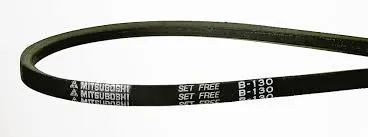- Arabic
- French
- Russian
- Spanish
- Portuguese
- Turkish
- Armenian
- English
- Albanian
- Amharic
- Azerbaijani
- Basque
- Belarusian
- Bengali
- Bosnian
- Bulgarian
- Catalan
- Cebuano
- Corsican
- Croatian
- Czech
- Danish
- Dutch
- Afrikaans
- Esperanto
- Estonian
- Finnish
- Frisian
- Galician
- Georgian
- German
- Greek
- Gujarati
- Haitian Creole
- hausa
- hawaiian
- Hebrew
- Hindi
- Miao
- Hungarian
- Icelandic
- igbo
- Indonesian
- irish
- Italian
- Japanese
- Javanese
- Kannada
- kazakh
- Khmer
- Rwandese
- Korean
- Kurdish
- Kyrgyz
- Lao
- Latin
- Latvian
- Lithuanian
- Luxembourgish
- Macedonian
- Malgashi
- Malay
- Malayalam
- Maltese
- Maori
- Marathi
- Mongolian
- Myanmar
- Nepali
- Norwegian
- Norwegian
- Occitan
- Pashto
- Persian
- Polish
- Punjabi
- Romanian
- Samoan
- Scottish Gaelic
- Serbian
- Sesotho
- Shona
- Sindhi
- Sinhala
- Slovak
- Slovenian
- Somali
- Sundanese
- Swahili
- Swedish
- Tagalog
- Tajik
- Tamil
- Tatar
- Telugu
- Thai
- Turkmen
- Ukrainian
- Urdu
- Uighur
- Uzbek
- Vietnamese
- Welsh
- Bantu
- Yiddish
- Yoruba
- Zulu
Dec . 09, 2024 22:41 Back to list
Understanding Wrapped V Belts for Enhanced Performance in Mechanical Systems
Understanding Wrapped V-Belts An Essential Component in Power Transmission
Wrapped V-belts are critical components used in various mechanical systems for power transmission. They are designed to transmit power between two pulleys by utilizing the friction between the belt and the pulley surfaces. Characterized by their V-shaped cross-section, these belts offer several advantages, including high efficiency, durability, and versatility in various applications.
Design and Structure
The structural design of a wrapped V-belt typically consists of several key layers. At the core, there is a strong tensile cord made from materials like polyester or nylon, which provides excellent strength and resistance to stretching. Surrounding this core is a rubber compound that enhances flexibility and grip. The outer layer often consists of fabric or additional rubber for protection against wear and environmental conditions. The outer wrap also plays a vital role in providing traction and reducing slippage, which is crucial for effective power transmission.
Advantages of Wrapped V-Belts
1. High Friction and Grip One of the most notable features of wrapped V-belts is their ability to create a high-friction surface, which enhances the grip on the pulleys. This quality reduces the chances of slippage, ensuring that the power is transferred efficiently from the motor to the driven machinery.
2. Flexibility and Adaptability Wrapped V-belts can easily adapt to various pulley sizes and configurations. This versatility allows them to be used in a wide range of applications, from heavy industrial machinery to household appliances. They can also handle slight misalignments between pulleys, which is a common issue in mechanical systems.
3. Durability The robust construction of wrapped V-belts ensures longevity and resistance to wear and tear. The materials used in their design help them withstand harsh operating conditions, including extreme temperatures, humidity, and exposure to chemicals. This durability reduces the frequency of replacements, ultimately lowering maintenance costs.
wrapped v belt

4. Smooth Operation Wrapped V-belts provide a smooth and quiet operation compared to flat belts or chain drives. The design minimizes vibration and noise, contributing to a more comfortable working environment, particularly in applications where noise levels are a concern.
Applications
Wrapped V-belts are utilized in a multitude of applications. In industrial sectors, they are commonly found in conveyor systems, motors, and pumps, where reliable power transmission is vital. In the automotive industry, wrapped V-belts are used to drive essential components like alternators, water pumps, and air conditioning compressors. Additionally, they are prevalent in agricultural machinery, HVAC systems, and various types of household equipment such as washing machines and dryers.
Maintenance Considerations
To ensure optimal performance and prolong the lifespan of wrapped V-belts, regular maintenance is crucial. This includes inspecting belts for signs of wear, such as cracks or fraying, and checking tension and alignment regularly. Proper tensioning is especially important, as both under-tensioned and over-tensioned belts can lead to excessive wear or failure. Additionally, keeping the pulleys clean and free from debris will help maintain the belt's integrity and efficiency.
Conclusion
In summary, wrapped V-belts play a fundamental role in the functioning of various mechanical systems, providing efficient power transmission through their unique design and construction. Their advantages—such as high friction, flexibility, durability, and smooth operation—make them invaluable in numerous applications across different industries. Proper maintenance ensures their longevity and effectiveness, making them a reliable choice for many power transmission needs. Understanding the properties and applications of wrapped V-belts is essential for anyone involved in engineering, maintenance, or design within mechanical systems.
-
Korean Auto Parts Timing Belt 24312-37500 For Hyundai/Kia
NewsMar.07,2025
-
7PK2300 90916-T2024 RIBBED BELT POLY V BELT PK BELT
NewsMar.07,2025
-
Chinese Auto Belt Factory 310-2M-22 For BMW/Mercedes-Benz
NewsMar.07,2025
-
Chinese Auto Belt Factory 310-2M-22 For BMW/Mercedes-Benz
NewsMar.07,2025
-
90916-02660 PK Belt 6PK1680 For Toyota
NewsMar.07,2025
-
drive belt serpentine belt
NewsMar.07,2025

